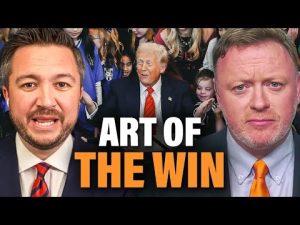In an alarming incident that has sent shockwaves through the community, Elias Rodriguez has been identified as the alleged shooter responsible for the tragic deaths of two staff members at the Israeli embassy. This disturbing event, which authorities describe as being fueled by anti-Semitic ideology, highlights a troubling trend of political violence that seems to have worsened in recent months. Particularly since the harrowing terrorist attacks by Hamas on October 7th, anti-Jewish sentiment appears to be reaching new heights.
Rodriguez’s background reveals connections to several far-left organizations, including the Popular Front for the Liberation of Palestine, a group with a Marxist orientation. In addition, he reportedly has ties to the Party for Socialism and Liberation—a connection that the group is now eager to distance itself from, given the gravity of the situation. This shooter is not a newcomer to radical politics; his past involvement in protests, including Black Lives Matter demonstrations back in 2017, shows a long-standing commitment to left-wing causes that could have propelled him toward this tragic act.
Eyewitness accounts from the scene paint a surreal picture of the moments following the shooting. One witness described how Rodriguez, initially thought to be a victim himself, was allowed into the Jewish Museum. There, he engaged in conversation, even accepting a glass of water from this kind-hearted stranger. It was during this exchange that the tension escalated. Rodriguez, inquiring if the shooting was related to the museum’s Jewish character, gradually revealed his true role when he pulled out a red keffiyeh and proclaimed, “I did it for Gaza, free, free Palestine.” His chant echoed through the halls, signaling not just a political statement but an alarming embrace of violence.
The symbolism of the red keffiyeh cannot be overlooked, as it is widely recognized as an emblem of solidarity with Palestinian liberation movements. Such gestures, once confined to protests and demonstrations, have now spilled into real-world violence, indicating a potentially lethal intersection of ideology and action. The incident underscores how political rhetoric, often seemingly innocuous or academic, can become dangerously radicalized when left unchecked, especially in an environment where political violence is becoming disturbingly mainstream.
The broader societal implications of these events are grave. College campuses across the United States have witnessed an increase in anti-Semitism following recent geopolitical developments, with Jewish students facing harassment and threats in what can only be described as a hostile climate. The situation raises questions about the responsibilities of institutions and individuals alike to combat such hatred before it escalates into actions that can cost innocent lives. The alarming reality is that the hatred that once simmered quietly has now erupted into a very real danger, showing that in today’s world, ideology can lead to catastrophe if left unchecked.







